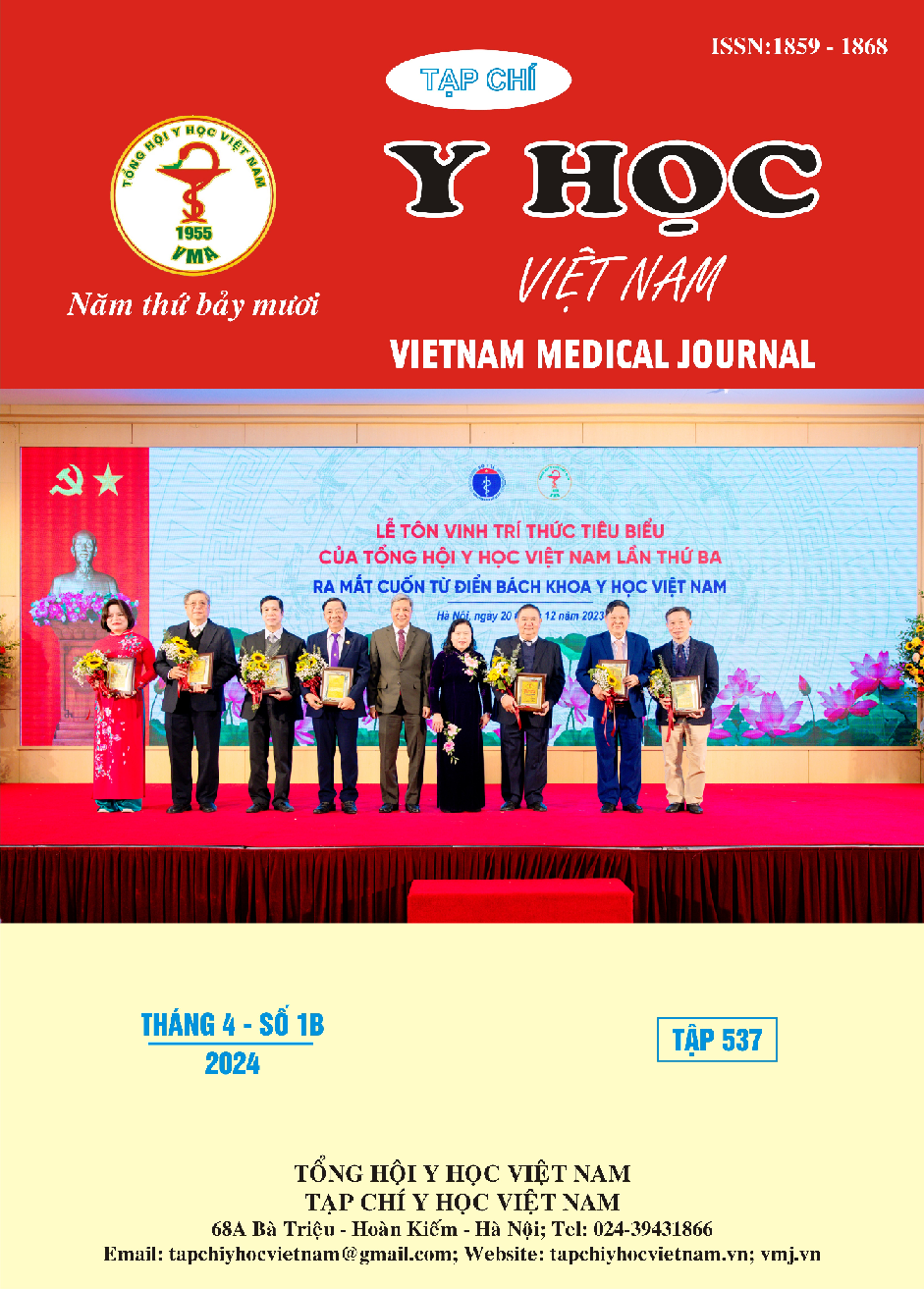ĐÁNH GIÁ KẾT QUẢ ĐIỀU TRỊ CÁC TỔN THƯƠNG CỔ TỬ CUNG MỨC ĐỘ CAO BẰNG PHƯƠNG PHÁP KHOÉT CHÓP TẠI BỆNH VIỆN HÙNG VƯƠNG NĂM 2018-2020
Nội dung chính của bài viết
Tóm tắt
Đặt vấn đề: Việc tầm soát phát hiện sớm bằng tế bào học và HPV có thể giúp phát hiện sớm các trường hợp tiền ung thư để ngăn ngừa phát triển thành ung thư cổ tử cung (UTCTC) và có thể chữa khỏi bằng các phương pháp can thiệp tối thiểu như khoét chóp để lấy mô tổn thương ra khỏi cổ tử cung. Mục tiêu: 1. Xác định tỷ lệ điều trị thành công các tổn thương cổ tử cung (CTC) mức độ cao bằng phương pháp khoét chóp. 2. Xác định các yếu tố liên quan đến kết quả điều trị khoét chóp CTC. Phương pháp nghiên cứu: Nghiên cứu cắt ngang có phân tích, cỡ mẫu 220 trường hợp được khoét chóp CTC lần đầu tại bệnh viện thực hiện trong thời gian 2018 – 2022. Kết quả: Tỷ lệ điều trị thành công các tổn thương CTC mức độ cao bằng phương pháp khoét chóp CTC sau 30 tháng là 87,7% (KTC 95%: 83,36-92,1%). Tỷ lệ thất bại 12,3%. Các yếu tố liên quan đến kết quả điều trị khoét chóp CTC:Tuổi ≥ 38 tuổi làm tăng nguy cơ điều trị thất bại với OR= 1,32 (KTC 95%: 1,22-3,95, sự khác biệt này có ý nghĩa thống kê với p=0,012 < 0,05. Tình trạng mãn kinh làm tăng nguy cơ điều trị thất bại với OR= 1,18 (KTC 95%: 1,07-3,7, sự khác biệt này có ý nghĩa thống kê với p=0,004 < 0,05. Tình trạng nhiễm HPV sau khoét chóp CTC làm tăng nguy cơ điều trị thất bại gấp 5,8 lần so với HPV (-) với OR= 5,8 (KTC 95%: 3,69-8,27), sự khác biệt này có ý nghĩa thống kê với p< 0,001 < 0,05. Kết luận: Điều trị tổn thương cổ tử cung mức độ cao bằng phương pháp khoét chóp dao thường hay vòng điện (LEEP) có tỷ lệ điều trị thành công cao. Lớn tuổi, mãn kinh và nhiễm HPV sau khoét chóp làm tăng nguy cơ thất bại của khoét chóp.
Chi tiết bài viết
Từ khóa
Cổ tử cung, phương pháp khoét chóp, CIN
Tài liệu tham khảo
2. Đỗ Thi Lệ Chi (2009), "Điều trị các tổn thương tân sinh trong biểu mô cổ tử cung độ II và III bằng phương pháp khoét chóp sử dụng vòng cắt đốt điện", (Bệnh viện Từ Dũ).
3. Phan Thị Nga (2007), Hiệu quả khoét chóp bằng vòng điện các tổn thương tân sinh trong biểu mô cổ tử cung.
4. Cao Ngọc Thành Hoàng Việt, Trần Thị Kim Anh (2015), "Đánh giá kết quả điều trị các tổn thương tiền ung thư tại Bệnh viện Trương Ương Huế", Tạp chí Phụ Sản. Tập 13 (Hội Phụ Sản Việt Nam), tr. 99-102.
5. Kreimer AR, Schiffman M et al Katki HA, (2007), "Viral determinants of human papillomavirus persistence following loop eclectrical excision procedure treatement for cervical intraepithelial neoplasia grade 2 or 3 ", Cancer Epidemiol Biomarker Prev. 16, tr. 11-16.
6. K Nagai N, Oshita T Mukai and et al (2004), "Human papillomavirus DNA status after loop excision for cervical intraepithelial neoplasia grade III - a prospective study", Int J Mol Med. 13, tr. 589-593.
7. Nam K, Chung S, Kim J, et al (2009), "Factors associated with HPV persistence after conization in patients with negative margins", J Gynecol Oncol. 20, tr. 91-95.
8. Ribadone, Naoko Kajitani and Stefan Schwartz (2020), "Role of Viral Ribonucleoproteins in Human Papillomavirus Type 16 Gene Expression", Arch Gynecol Obstet 282, tr. 193-197.
9. Yung-Taek Ouh, Hyun Woo Cho (2020), Risk factors for type specific persistence of high risk human papillomavirus and residual/recurrent cervical intraepithelial neoplasia after surgical treatment, Korean Society Obstetric & Gynecology Science.


